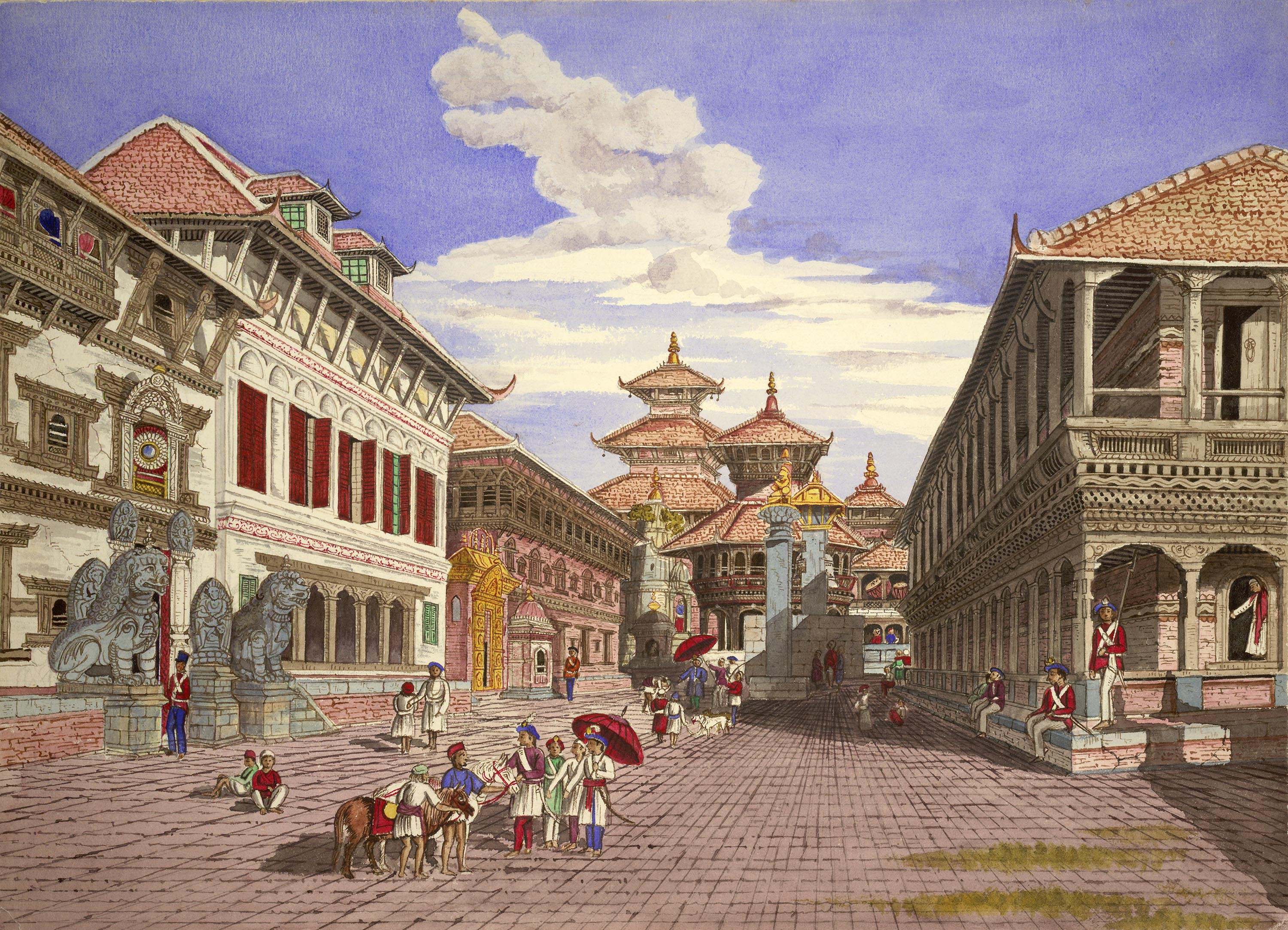The history of heritage

Seven years ago, on a particularly gloomy Saturday, the ground groaned as an earthquake shook Central Nepal, flattening villages and killing thousands.
Many historical monuments of Kathmandu Valley were reduced to rubble in just 50 seconds.
Photos of the ruins crossed the world: a broken Dharara, toppled houses leaning on each other over darkened streets, piles of bricks and timber covered in yellow dust.
Seven years later, monuments are coming out of their scaffolds, while others still have cracks that run the length of their walls.
Kathmandu has rebuilt itself every century after a major earthquake. The decision on how to rebuild is determined by the resources and sensibilites of the ruler at the time. What constitutes 'heritage' also changes with time.



“A family tree and heritage are almost synonymous,” says conservationist Alok Siddhi Tuladhar. “Because what we get from our ancestors is our heritage.”
Our parents and grandparents pass on heirlooms to us, Tuladhar explains, and this gives ‘heritage’ an immediate tangible tone, evidenced by the temples, monuments, hiti spouts that form the cultural legacy of Nepal spanning centuries of artistic and socio-political expression.
“Heritage also goes beyond just the physical monuments,” he adds. “The concept of heritage beyond just an object or artefact is especially true in the case of Nepal, where traditional and Indigenous practices are still living and breathing.”
This is different than, for example, the Colosseum in Rome which has archaeological significance, but in the absence of gladiators, that is now recontextualised.
“But here in Kasthamandap, it is a vastly different feeling to interact with Ganesh and Gorakhnath, who are still worshipped,” Tuladhar says. "The very manner of interaction is also part of Nepal’s unique heritage."




Bharat Maharjan of Nepal Heritage Documentation Project agrees: “All human acts, including fashion, cuisine, agriculture and architecture, are heritage, evidence for which can be found in everything around us.”
For instance toponyms give us a glimpse into the age-old practices of a certain place and community.
“In Kirtipur, there is a place called कांफ्वंद्वं which is now part of the university,” he says, “there used to be a funeral mound and people would go during the time of pandemic to pacify the spirits with wind instruments. Now the practice is obsolete, but the name of the place helps us trace that part of our history and culture.”
The Kathmandu Valley is remarkable because this ethnically and religiously diverse bowl-shaped valley of only 665 sq km has at least 130 important monuments, and lies at the crossroads of ancient civilisations of the subcontinent.
Read also: Preserving the intangible, Chandani KC
“Another uniqueness of the Valley is that human civilisation has flourished here continuously since ancient times without interruption, as can be found in the inscriptions, monuments and historical records,” adds Maharjan.
Continuity is integral to heritage, as without it there is no sense of inheritance. In fact, the word ‘heritage’ is related to Latin heres, meaning ‘heir’, and relies on practices and monuments being kept alive through people.
This is closely related to the Guthi in Newa communities, the membership to which is also almost always hereditary.
Tuladhar explains that the core value of building a monument revolves around the Guthi, a unique aspect of the Nepal Mandala’s culture, which oversees the upkeep, jatra, puja associated with the monument through community participation and income from the land allocated to it.
“This is an important part of our heritage, because the practice brings together people to form the rich socio-cultural fabric of our society,” Tuladhar adds. “All of which, while intangible practices, help conserve the physical monuments. This way, both tangible and intangible heritage can be kept alive.”


SHAKING THINGS UP
When the 2015 Gorkha earthquake struck, the Valley had not experienced a natural disaster of such magnitude for 81 years. Many monuments that came down had also been destroyed in the 1934 earthquake, and had been hastily rebuilt. While some temples and palace complexes were restored to their original Newa style of architecture, others were rebuilt in the Rana-era Mughal flourish.
Bharat Maharjan thinks this was because of the strict restrictions on importing wood during the Rana-era. “When Jang Bahadur built the Kalmochan Temple with the Mughul-style dome, it quickly became a popular style,” he adds, “The use of brick and stucco plaster was much cheaper and less time-consuming than that of wood, which also included carving.”
Read also: Nepal’s traditional seismic resistant designs, Sheilin Teo
The Bhaidega Temple in Patan used to be an impressive three-tiered structure built in 1678 by Bharo Bhagirath Bhaiya before it collapsed in 1934. It was then quickly rebuilt in the Mughal stucco dome style, which itself collapsed in 2015. It is now being restored to its pre-1934 design.
The conservation response of communities and activist groups after the 2015 earthquake was in many ways similar to the age-old traditions of the Valley, just like how their ancestors did after every previous disaster.
“Our ancestors were building these monuments knowing there would be earthquakes,” says Tuladhar, “Plans were in place to repair, restore and conserve the structure from time to time.”
Such outlook appears to have been affected by building materials as well, such as the use of stone in the Lichhavi era versus bricks and wood in the Malla era.

Conservation architect Sudarshan Raj Tiwari suggests in his 2009 paper Material Authenticity in Tradition of Conservation of Nepal that the difference in the terms used – pratisamskar (‘near to handed down from respected tradition’) in the Lichhavi inscriptions and jirnoddhar (‘renovation’) or navakam vara (‘new cover’) in the Malla period – may be because ‘the later conservation involved less of repair and reconsecration of images and more of restoration, repair and reconstruction of buildings and building parts.’
He goes on to write: ‘This also substantiates that the material nature of the ensemble of architecture had changed with development of comparatively tall temples in brick and wood and construction and reconstruction methods informed with a greater empirical understanding of the action of deteriorating agents of climate, earthquake and fire.’
Countries and communities have different understanding of heritage and its conservation. “The dictionary definition and umbrella practices may not relate to each and every place,” explains Tuladhar. “Nepal has its own rituals, practices, materials and climate, which affects how heritage can be protected and restored.”


At the same time, restoring these cultural sites go beyond replacing the broken pieces. Heritage is intrinsic to the polis, history and cultural activity.
Tiwari suggests that is what King Anshuvarma must have been thinking 1,500 years ago when he inscribed after the restoration of the wood and brick Devkula Temple in Kathmandu,“having repaired carefully so as to keep it in good condition for longer into future”.
Heritage, says Bharat Maharjan, incorporates the different aspects of society – political, economic and cultural – into one common identity. And every age has its own identity. Palaces and monuments that once looked out of place in Kathmandu have now become a part of Nepal's heritage.
Ram Bahadur Kunwar of the Department of Archaeology says: “Each building style and cultural practice mirrors a particular time and society.”


The stark contrast between the Malla-era buildings and the European neo-classical Rana architecture that favoured wide walls and tall windows with Greco-Roman columns tells us that different historical periods developed their own distinct heritage in Kathmandu Valley, often determined by the availability of both materials and craftspeople, and influenced by exchanges with other regions.
For example, UNESCO regards the architecture of the Valley as having developed with particular attention to traditional values, cultures and norms to create a harmonious urban landscape through the prohibition of infrastructure taller than temples in an area.
At present, the scenario is quite different. ‘City by-laws have often neglected height restrictions and related measures to protect the immediate surroundings of palace squares and other important sites, which can impact the quality and integrity of the sites,’ UNESCO Nepal wrote in a response to a Nepali Times query.
‘Conservation processes need to be informed by traditional practices, skills and knowledge, for without safeguarding the living heritage and the link to the community, it is difficult for the conservation of such monuments and sites to be meaningful.’

Alok Siddhi Tuladhar sees that in the tiered-roof temples and shikhara-style shrines complementing each other in the Valley.
“Imagine, in the past, the temple roofs with the mountains behind them, against the blue sky, like twins, side-by-side. It is the urban landscape taken together in harmony with nature.”
In contrast to this image are the highrise steel structures towering over the ancient towns. The skywalk in-progress in Kamaladi, for example, if seen at the right angle, breaks out behind the Ghanta Ghar like a glitzy attraction in a travelling fair.
But then that is probably how residents of Kathmandu regarded the alien design and dimension of the Ghanta Ghar when it was built. Will the Kamaladi stucture and the many view-towers across the country also one day become a part of our heritage?
Read more: Lessons still not learnt, Editorial
writer




